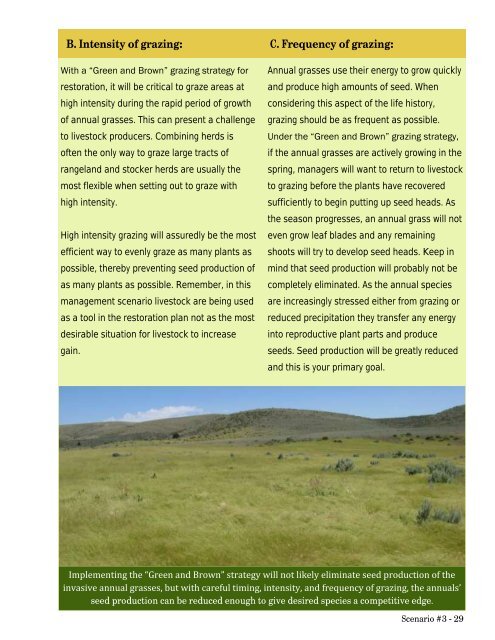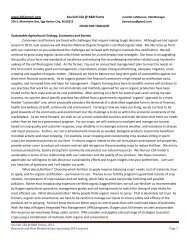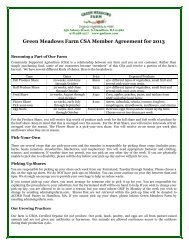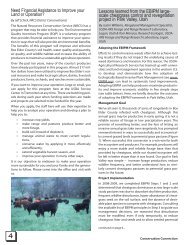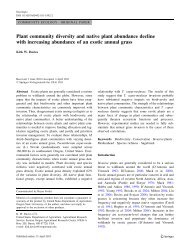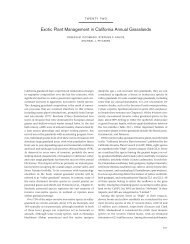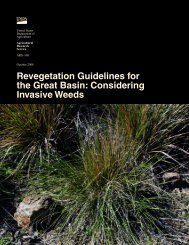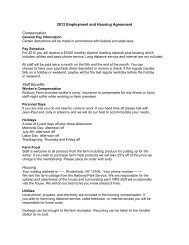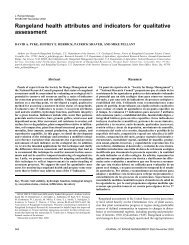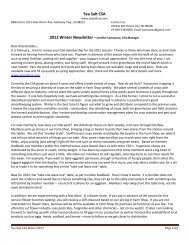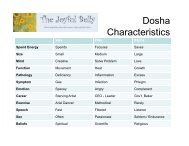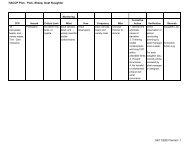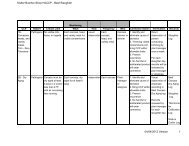“Green and Brown” Grazing Strategy
“Green and Brown” Grazing Strategy
“Green and Brown” Grazing Strategy
You also want an ePaper? Increase the reach of your titles
YUMPU automatically turns print PDFs into web optimized ePapers that Google loves.
B. Intensity of grazing: C. Frequency of grazing:<br />
With a <strong>“Green</strong> <strong>and</strong> <strong>Brown”</strong> grazing strategy for<br />
restoration, it will be critical to graze areas at<br />
high intensity during the rapid period of growth<br />
of annual grasses. This can present a challenge<br />
to livestock producers. Combining herds is<br />
often the only way to graze large tracts of<br />
rangel<strong>and</strong> <strong>and</strong> stocker herds are usually the<br />
most flexible when setting out to graze with<br />
high intensity.<br />
High intensity grazing will assuredly be the most<br />
efficient way to evenly graze as many plants as<br />
possible, thereby preventing seed production of<br />
as many plants as possible. Remember, in this<br />
management scenario livestock are being used<br />
as a tool in the restoration plan not as the most<br />
desirable situation for livestock to increase<br />
gain.<br />
Annual grasses use their energy to grow quickly<br />
<strong>and</strong> produce high amounts of seed. When<br />
considering this aspect of the life history,<br />
grazing should be as frequent as possible.<br />
Under the <strong>“Green</strong> <strong>and</strong> <strong>Brown”</strong> grazing strategy,<br />
if the annual grasses are actively growing in the<br />
spring, managers will want to return to livestock<br />
to grazing before the plants have recovered<br />
sufficiently to begin putting up seed heads. As<br />
the season progresses, an annual grass will not<br />
even grow leaf blades <strong>and</strong> any remaining<br />
shoots will try to develop seed heads. Keep in<br />
mind that seed production will probably not be<br />
completely eliminated. As the annual species<br />
are increasingly stressed either from grazing or<br />
reduced precipitation they transfer any energy<br />
into reproductive plant parts <strong>and</strong> produce<br />
seeds. Seed production will be greatly reduced<br />
<strong>and</strong> this is your primary goal.<br />
Implementing the <strong>“Green</strong> <strong>and</strong> <strong>Brown”</strong> strategy will not likely eliminate seed production of the<br />
invasive annual grasses, but with careful timing, intensity, <strong>and</strong> frequency of grazing, the annuals’<br />
seed production can be reduced enough to give desired species a competitive edge.<br />
Scenario #3 - 29


